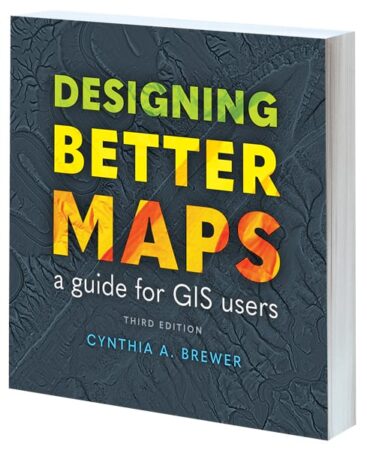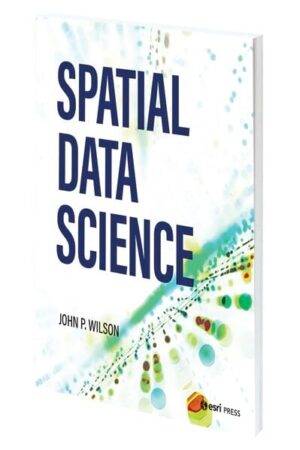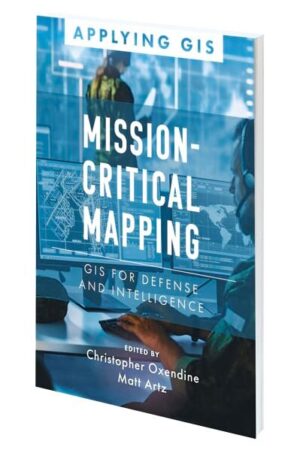Designing Better Maps: A Guide for GIS Users, Third Edition

By Cynthia A. Brewer
For more than 18 years, Designing Better Maps: A Guide for GIS Users has been essential reading for all mapmakers who use GIS. The third edition—updated with new and revamped design practices—continues that legacy. With more than 400 full-color illustrations, this book applies map design best practices to both reference and statistical mapping. Readers learn how to plan maps, use basemaps, employ scale and time, share maps, apply type and labels, understand and use color, and customize symbols. October 2024, 272 pp. Ebook ISBN: 9781589487833 and paperback ISBN: 9781589487826.
Spatial Data Science

By John P. Wilson
In Spatial Data Science, author John P. Wilson reveals how spatial data scientists and GIS practitioners can add big data to their workflows and use ArcGIS technology to support new spatial data science methods. Over six chapters, the book explains the growth of spatial data through the past few decades, cloud computing, data science, big data, and the Esri geospatial cloud. Anyone studying GIS or who works in computer science, engineering, statistics, and information and library science would benefit from reading this book. November 2024, 220 pp. Ebook ISBN: 9781589486119 and paperback ISBN: 9781589486102.
Mission-Critical Mapping: GIS for Defense and Intelligence

Edited by Christopher Oxendine and Matt Artz
Mission-Critical Mapping: GIS for Defense and Intelligence is a collection of real-life stories that demonstrate how defense and intelligence organizations use GIS to improve operations and readiness, collect intelligence, collaborate, and provide humanitarian assistance. By using ArcGIS technology, these organizations can integrate data, perform analytics, and create a decision-support framework that encompasses all defense functions, improving decision-making in dynamic environments. The book includes a section that provides ideas, strategies, and tools to help readers jump-start the use of GIS in their own defense and intelligence operations. October 2024, 160 pp. Ebook ISBN: 9781589488007 and paperback ISBN: 9781589487994.

